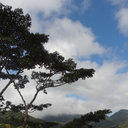Study of the changes in insoluble polysaccharides during pollen development in rice ( Oryza sativa L.) by microscopic multispectral imaging.
Parole chiave
Astratto
Multispectral analysis combined with the Periodic Acid-Schiff method was used to investigate cytological features of insoluble polysaccharides and changes in total insoluble polysaccharide content (TPC) during pollen development in rice, including four cytoplasmic male sterility lines (MSLs) and their corresponding fertility-maintaining lines (FMLs). The multispectral curves of the relative transmittance value (RTV) and the images of developing pollen cells were obtained across a range of successive wavelengths (400-720 nm). A minimum RTV was found near 550 nm indicating an absorption peak of the TPC. Thus, the TPC was measured using the RTV of 550 nm. In the four FMLs, the minimum TPC of developing pollen cells occurred at the late microspore stage, while the maximum TPC occurred at the mature pollen grain stage. The TPC levels of pollen cells were significantly higher in the four FMLs than in their corresponding MSLs during and after pollen abortion. Notably, a steep decrease of multispectral curves at 420 nm appeared before the occurrence of abortion, implying a marker associated with pollen abortion in rice. Our results will be helpful for exploring the changes in TPC during pollen ontogenesis in rice and provide a novel method for the study of bio-macromolecules.



